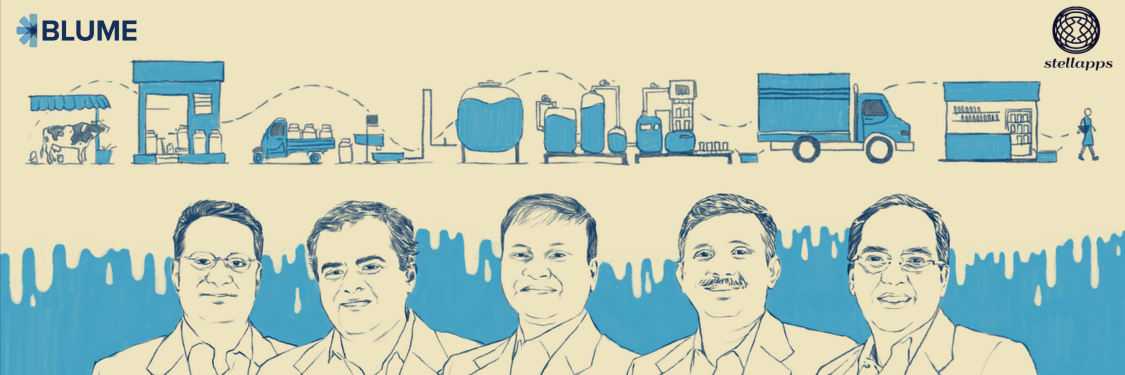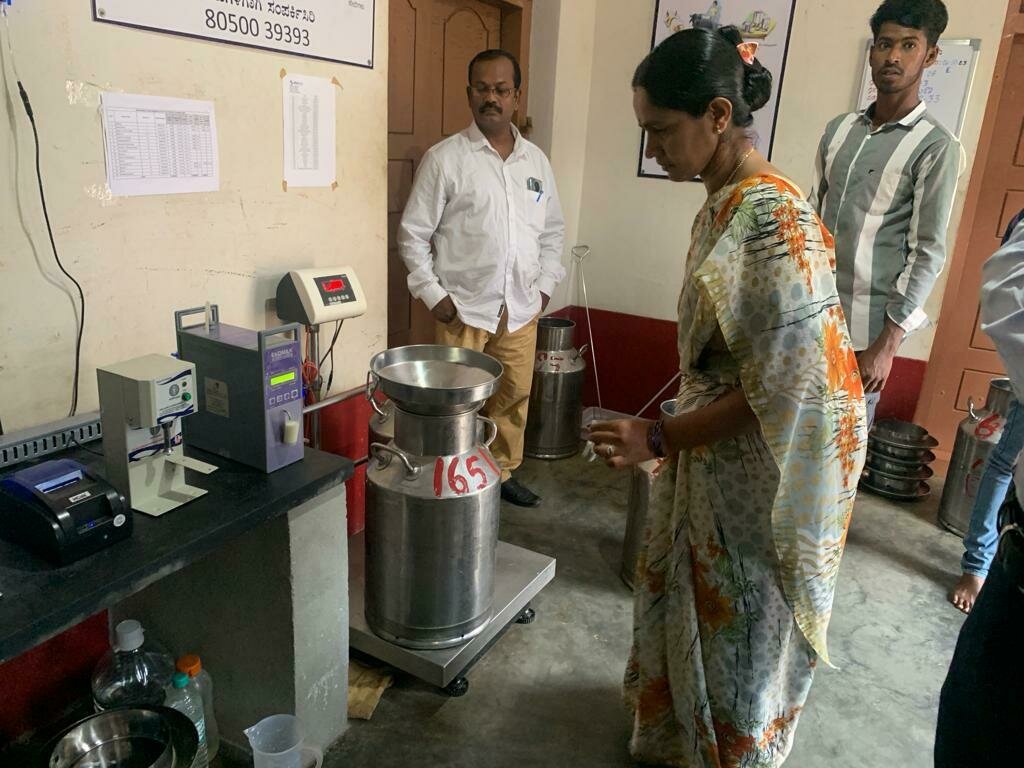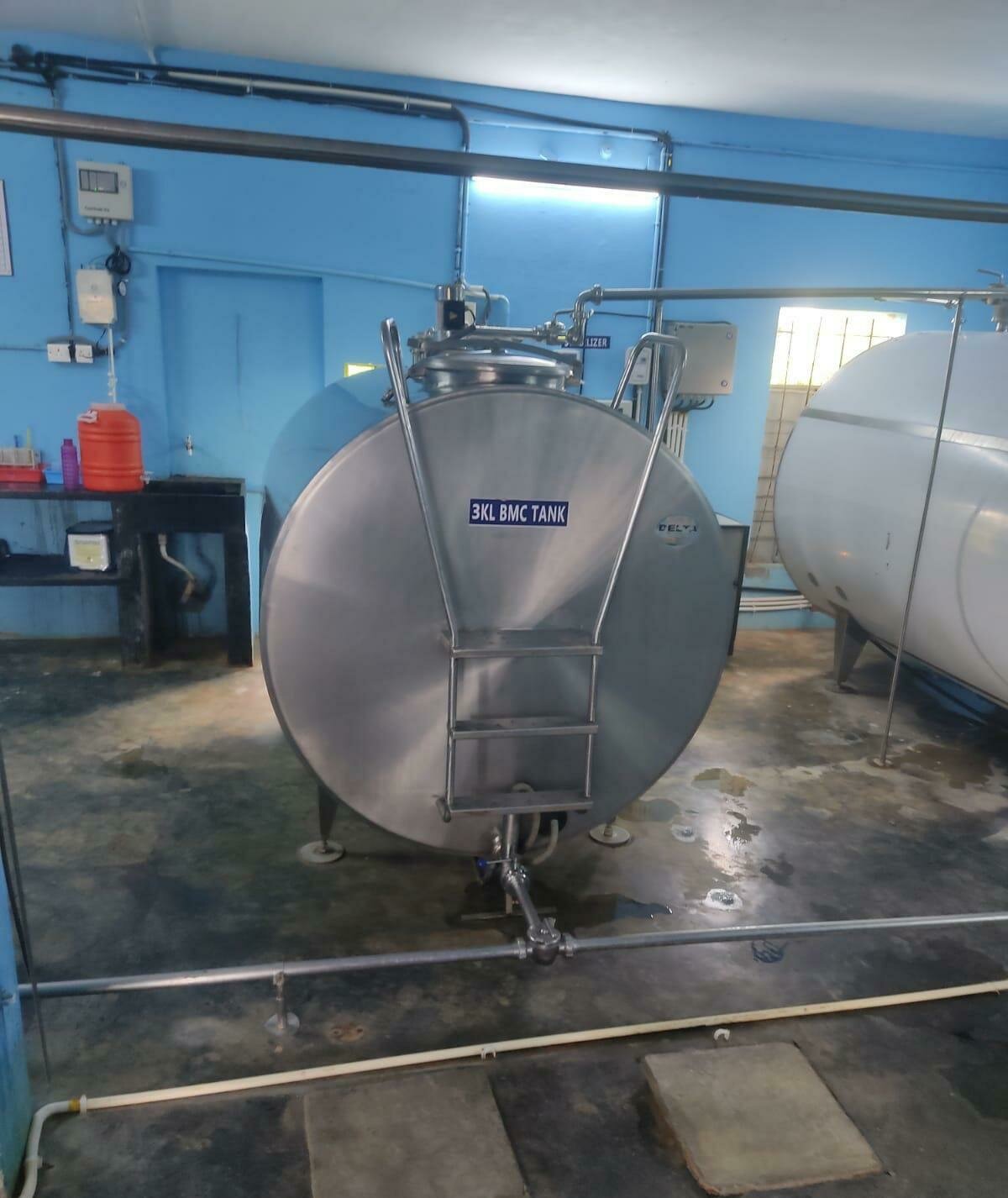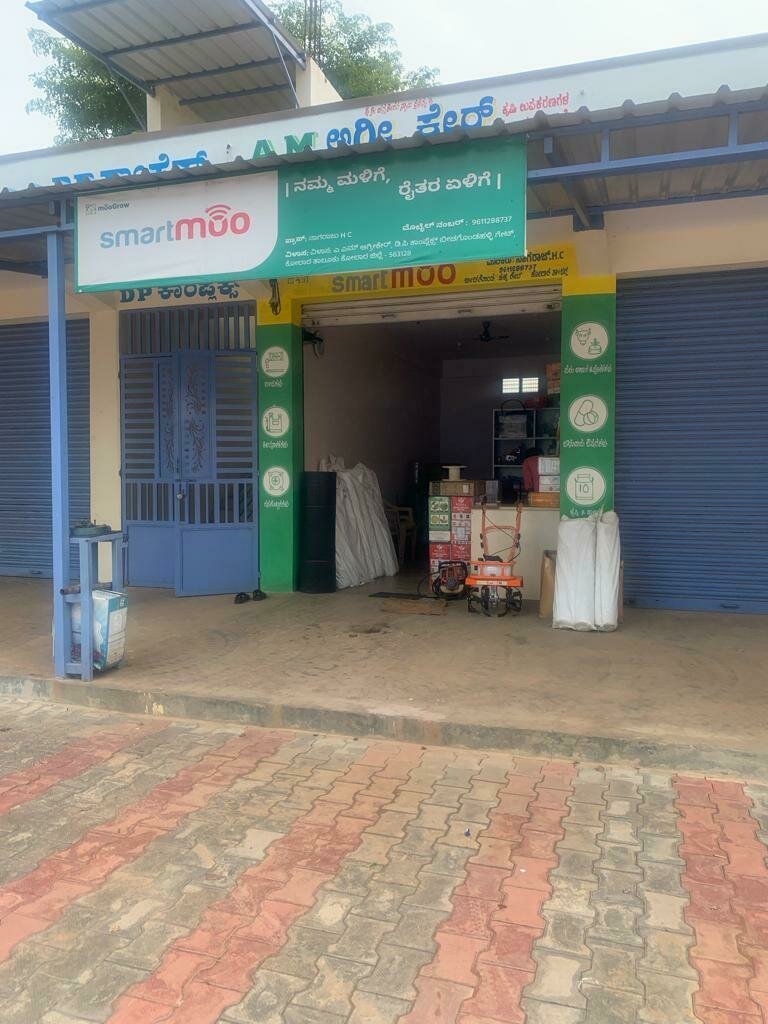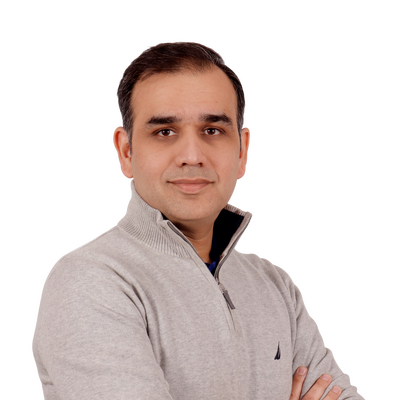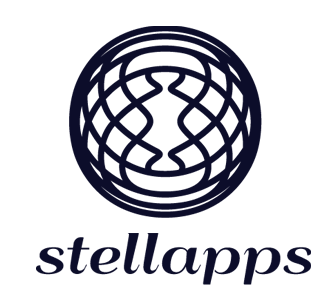More than five decades ago, Dr. Verghese Kurien transformed India’s economy by linking milk producers to consumers throughout the country. We often refer to it as the White Revolution.
Cut to 2011, five entrepreneurs believed the industry was ripe for a fresh iteration of this revolution. Together, they established Stellapps, which aims to usher in the White Revolution 2.0 by increasing farmers’ income through better productivity, improved traceability, and higher milk quality across the milk supply chain.
Today, Stellapps is perhaps the only company in India that has digitized and streamlined the dairy supply chain covering 42,000 villages and hundreds of dairy operators. Its tech stack digitally touches the lives of over 3.5 million farmers and monitors about 14 million liters of milk every day.
Their success in digitizing one of the most complex supply chains in difficult terrains is anchored on leveraging IoT (Internet of Things) and cloud Technology in novel ways.
Now, one might wonder what IoT has to do with cows and milk. Before we answer that question, let's go to the beginning.
Follow the Milk: Launching IoT for cows and farms
Stellapps’ journey began with a chance opportunity to help a friend who was trying out the farm life.
Ranjith Mukundan, CEO and co-founder of Stellapps, and his friends had more than a decade of experience in telecom and launched Stellapps in 2011 as an IoT app store for customized app-based solutions. They wanted to be multi-sector and built prototypes for hospitals and logistics companies to let them manage their operations remotely.
But over time, they realized that the unit economics of building apps for multiple sectors wouldn’t work. “We figured that to make unit economics work, we have to go deep into one sector,” says Ranjith.
Coincidentally, one of Ranjith’s friend’s uncles was starting an organic dairy farm on the outskirts of Bangalore and was looking for a way to monitor his farm and cows remotely.
“We found it very interesting and a very apt use case for IoT. From an IoT perspective, a cow and a bus are the same, just the parameters to monitor change.” Ranjith says.
Once the founders set their minds on solving how to monitor cows and farms remotely, they decided to go and live at the farm. For city-dwelling founders, this wasn’t easy, but an immersion into the environment and daily routines of farmers was critical to build their product. The idea was to understand the nitty-gritty of milk production.
“We realised that it's a huge sector and we dropped all other verticals, dropped telematics, patient and doctor care, and started focusing on agriculture,” Ranjith says.
Stellapps already had the tech in place, which it customized for cattle and farms. They also had to knock the costs down to make the tech affordable for the farmers. It created animal wearable devices with sensors on them and provided farmers with an automated milking system so that they don’t have to milk their cows by hand, ensuring a hygienic process.
The approach worked, and they were able to increase the farm productivity. Their success gave them the confidence to scale up and sell to more farmers.
Cream of the client crop: Moving upstream from farmers to dairy operators
For about two years, Stellapps tried selling its devices to farmers but realized they weren't a profitable customer segment for them, and going after them didn’t make much economic sense.
By 2014, Ranjith decided to expand the scope of the business and solve issues impacting the larger dairy industry. Instead of focusing on individual farmers, Stellapps started looking at the problems of dairy operators who had a captive farmer base.
Milk and other dairy products make several pit stops in their journey from farms to consumers. Ranjith says that he knew his company could improve the supply chain efficiency for dairy operators and fix friction at every stage of milk movement.
Stellapps’ pitch to dairy operators and co-operatives was three-pronged: increasing productivity, improving the quality of milk, and close tracking of the milk movement from farm to consumers so that it remains unadulterated, resulting in higher end-consumer satisfaction and stickiness.
“White Revolution 1.0 was about solving the market linkage problem, which is about moving milk sourcing from the unorganized sector to the organized sector. We said White Revolution 2.0 should be about improving milk quality, improving farm productivity, improving traceability, and they're all interlinked,” Ranjith says.
So Stellapps built tech that touched the entire supply chain — the farm, the collection center, the chilling center, the processing plants, and the retailers. The company demonstrated to these dairy operators how they could use their tech to improve efficiency and maintain the quality of the milk.
Here is how the tech stack works:
- Every farmer gets a unique ID, which is mapped to the unique IDs of their cows and buffaloes.
- When the farmer comes to the collection center with milk, the operator at the site scans the farmer’s ID, which has all the details like the quantity of milk the farmer last deposited, etc. She then tests the milk quality for fat and protein.
- The farmer’s wage is then decided based on the milk quality and the quantity. The milk deposited is marked to the farmer’s ID digitally, which enables faster payments.
- As the milk moves to the chilling center, the company measures if proper temperature is maintained throughout using temperature sensors.
- By using its proprietary volume sensor, Stellapps checks the volume for uniformity 24/7. If anyone tries to adulterate the milk throughout the value chain, it will be detected.
By marrying hardware and software, Stellapps created a Z+ security for milk, and dairy operators lapped it up.
“Between 2014 and 2017, 50 to 60 dairy operators deployed our tech,” Ranjith says. Seeing the growth, in 2017, Blume Ventures decided to invest in its Series A round.
Milky Way: Launching a galaxy of products
While at the outset, the company partnered with major dairy operators by leasing their tech to them, Ranjith knew it was not enough for the growth they wanted.
During his stint in the telecom industry, Ranjith had seen first-hand how value-added services contributed to a company’s revenue stream. That is what they wanted to go after.
“We wanted to scale our unit economics non-linearly and given our telecom background, we thought we could make tech licensing the foundational block and build an ecosystem of services on top of it. The tech that we had built to help other dairy operators, we used it to become dairy operator ourselves. From a tech licensing company, we decided to become a vertically integrated company with tech as the enabler. We were no more a mere operator, we started running the supply chain ourselves,” Ranjith explains.
As Stellapps set up its own supply chain under its brand MooMark, it adopted an ecosystem-led approach to identify what value-added services farmers would find useful. For instance, it realized that financial assistance is critical for farmers as banks hesitated in underwriting loans to them.
Stellapps started offering loans and insurance to farmers through MooPay. Ranjith says that since the team had no banking experience, the company hired a veteran banker to help set up MooPay.
Unlike banks, which couldn’t ascertain a farmer’s credit history, Stellapps can determine their credit profile through alternate measures of creditworthy behavior, such as farmers’ cash flow, their approach towards cattle vaccinations, deworming protocols, etc. This is part of the data that they collect through their supply chain.
“MooPay is a combination of financial services and insurance services. Insurance includes not just cattle life insurance, but things like heat index insurance,” Ranjith explains. “For example, if the heat wave in South India during peak summer goes above a certain limit, animal productivity falls. We would set a limit, say, in Chittoor district, if the temperature goes above 39 degrees centigrade, we will pay you so much and that is insured.”
Stellapps' current loan dispersal run rate is about INR 4 crores a month across different ticket sizes. Almost 70,000 farmers across 1600+ villages avail credit from MooPay and insure their cattle and farms.
The next step was to help farmers with farm inputs as a part of its value-added service strategy.
Its third product, MooGrow, is all about selling farm products, including fertilizers, pesticides, chaff cutters, sprayers, mulch covers, and more. MooGrow is the one-stop shop for farmers to buy anything that they need.
One of the advantages of MooGrow for farmers is its hyper-local presence in the village. They don’t have to go to the market to buy agri-products, as the company has set up its warehouse in their chilling centers.
These three offerings, MooMark, MooPay, and MooGrow, were built between 2018 and 2021. The company also layered its app, SmartFarms, on top of these offerings. The app has everything a farmer needs - right from their milk passbook to educational videos for improving cattle health, milk production, and the retail store to buy agri-inputs, SmartFarms has everything.
However, it would be wrong to believe that farmers are the only customers Stellapps has. It has carved out four different customer segments.
Under its brand MooMark, where it operates the dairy supply chain, it manufactures dairy products for FMCG brands like ITC, Unilever, and Paperboat, its first set of customers.
Farmers are the second customer segment who buy financial products from the company along with agri-inputs.
The third set of customers is its OG customers – the dairy operators like Hatsun, Lactalis, and Heritage. It still earns a chunk of its revenue by licensing its tech to them.
For the fourth set of customers, it ventured into the B2B2C play. It partners with small to medium retail outlets that have built their brand for different products, except dairy. “We tell them that since you are a well-known brand, we could help you expand your dairy category and become a super distributor for your paneer (cottage cheese), dahi (yogurt), and milk,” Ranjith explains.
The road ahead: Going public and going global
Stellapps has come a long way since its humble beginnings in a friend’s farmhouse. When it switched from selling to farmers to dairy operators in 2017-18, its revenue runrate was USD 5 million.
“When the switch happened in 2017-18, we were still margin-negative, and it took us till about 2022 to turn the unit economics positive. Currently, our revenue run rate is USD 70-80 million, which is about 16 times compared to our revenue in 2017. Our revenue took off in 2020 when we launched the value-added services commercially, growing almost 8X by 2022,” Ranjith says.
By investing in creating a huge customer base and creating a tech stack that can capture and process gargantuan amounts of data that other products in its galaxy can consume, Stellapps ensured in the long term, it could switch gears toward being capital efficient. It also has seven patent applications for its in-house IoT tools, of which three have been approved.
All these growth markers didn’t go unacknowledged by the investor community. Right from Blume Ventures and Omnivore Capital to Qualcomm and Stride Ventures, the company has raised a total of USD 36.8 million. The Gates Foundation and Netherlands sovereign fund IDH have also invested in Stellapps, their first equity investments in India.
“We thought milk was kind of a capital-intensive industry where we didn't have much of a role. But then we were impressed by how Stellapps was solving the pain point for dairy operators and the way it was rapidly digitizing the supply chain. They were not making vitamins but painkillers for the dairy industry,” says Karthik Reddy, co-founder and Managing Partner of Blume Ventures.
Karthik adds that what attracted Blume to Stellapps was also the fact that the five founders, all Wipro alumni, had worked closely together, had immense trust in each other, and wanted to keep building for the next decade and more, closely aligning with Blume’s investment thesis.
Now that the company has made a firm footing in the industry, Ranjith and his co-founders have gone back to the planning board to chart their future plans, which include an IPO in the next 36 months.
Ranjith knows that the road to IPO is a long one.
“Currently MooMark processes 250,000 litres per day, and in the next three years, we would like to reach at least 1M litres per day, with revenue of over USD 200M and EBITDA cash of over USD 20M,” Ranjith says. “That's the level for an IPO filing that we're targeting right now.”
On one hand, Ranjith is working on taking the company public, he and his team are also working on taking the company overseas.
“We're talking to the countries in the Middle East and a bunch of companies in Southeast Asia to see if we can do private label milk products for them,” Ranjith says.
Going beyond milk, Ranjith's vision is to create a food value chain using the platform and the same farmer and consumer base for other products like sweetcorn, seedless watermelon, and spices. Currently, the company is into raw and pasteurized milk, paneer, curd, ghee, khova, and milk powder. Its aspirations are to get into whey powder, flavored paneer, A2 paneer, buffalo paneer, ice cream, and other dairy-related products.
At the end of the day, Ranjith sees Stellapps creating transparency between customers and farmers, ensuring customers get pure and top-quality farm produce, and increasing farmers’ income over time. He has achieved it in almost 45,000 villages, and his next step would be to spread it nationwide and then across the world.


